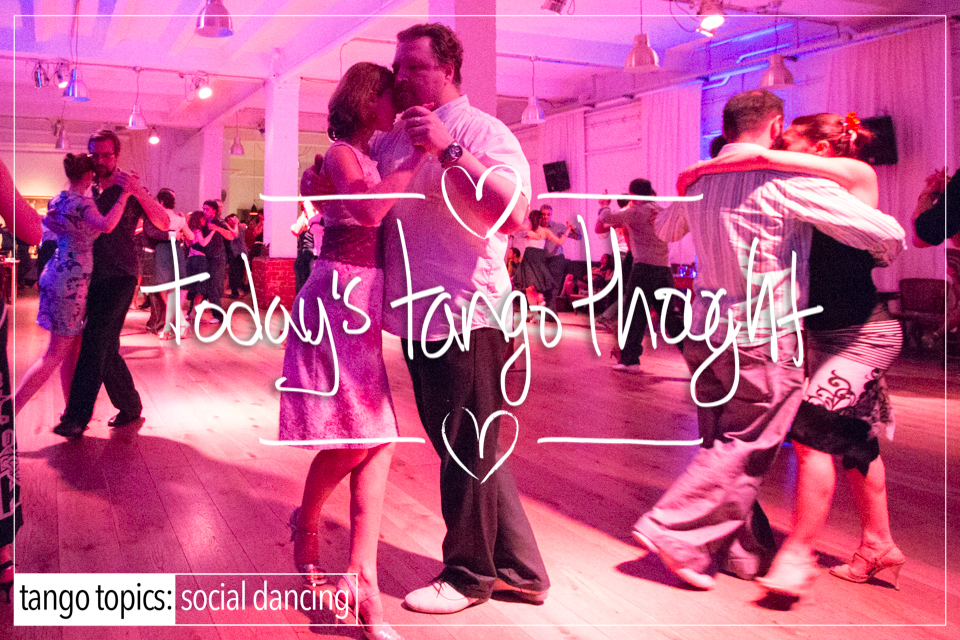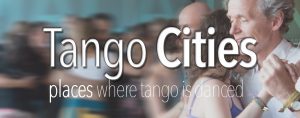Today’s Tango Thought does not address the emotional stresses when you’re just starting out, just learning the dance as a whole. Nor the repeated stresses of quitting every few weeks because you just can’t figure out why x or y or z happens, the dance is hard to learn unless you have a very thorough teacher that goes over every facet and detail. Or haven’t learned how to navigate the social scene and/or the codígos which is confusing AND stressful in and of itself. No, today’s topic deals with the dancer who’s been around awhile and has passed through these rights of passage, and they are that to be certain. More like trials by fire more than anything else. If that’s you, then read on. If that’s not you, it will be one day after you have passed all that was mentioned before.
There comes a point in your Tango life for one of several reasons where you find yourself in an odd place – the want to give up Tango. The most common reason is that you’re just not getting the same thing from the dance as you used to get from it. You go to Milongas. You find yourself sitting more, talking more, and dancing less. Or you find that there are Spouse/Partner demands that have become important which take you away from the dance. Or that the quality of dances that you were getting just don’t seem the same anymore, there’s more pulling, or pushing as far as you’re concerned now that you’ve become a bit more aware of Intention Based Dancing. Or that your job demands more time from you, and thereby less dance time. Or that a milonga’s location or getting to and from has become problematic at best. Or that you’re not feeling welcome by the community that you dance in. Any one or a combination of them can make you feel like giving up Tango.
Here are some things that you can do to change your experience.
1.) Take a break! This one is really easy, costs nothing, and actually creates the ‘pause’ that refreshes. Realistically there’s nothing wrong with taking a break now and again. Step away from the dance. Develop other interests. And then when you’re ready try to bring just a pinch of Tango back into your life. You may find that the pause is exactly what you needed.
2.) Get out of Dodge! Meaning you need to travel to find other environments that can open more doors to you. The more that you’ll travel, the more that you’ll see that there are more people out there that dance. Dancing in the same place with the same people over and over again gets old really quickly. So it’s easy to see that you can enter the Tango Doldrums. An awful place from which there is seemingly no end in sight. Except, for when you travel, from your home city to somewhere else. Doing so will reinvigorate you, change you, excite you again. But then again, you’ll have to keep traveling to get more of the same! It’s an evil cycle really. But that’s the price you pay for your addiction..ahem…Tango. 🙂
3.) Learn the opposite role! Yup. That’s right. Put simply you are living in an environment where you have learned only one side of the equation. And that has it’s detracting factors, most notably it is easy to become complacent that you know all that there is to know about the dance. Trust that Tango is like an Unending Onion, there’s always another effing layer for you to explore. Some are thin, some are very thick. Learning to dance the other side of the equation is that next layer, and boy is it a humdinger! Doing so has monster benefits that you can’t even begin to imagine. Like for instance, understanding why certain partners avoid dancing with you, seeing how and why certain things feel the way that they do and how to make them better. But probably the best reason is that your awareness of dancing changes radically because now you’re hearing the other side of the equation at the same time while dancing your gendered side. One major benefit is compassion for the other role that you were previously unaware of. That compassion creates awareness. And that awareness is the beginning of change in you on levels you can’t even begin to imagine. 😉 Some people have a sociological aversion to this idea. Tango should be danced only one way and that’s the only way that Tango can be enjoyed. Ok, for those people that see the dance that way. Then here’s an invitation. You don’t have to reverse roles when at a Milonga, but you can at the very least play with this stuff at a practica or a class series. It’s not going to kill you and god forbid, you might actually learn something that you didn’t know existed before. And before you know it, cool things will start to happen that weren’t happening before. Like other people that you thought were inaccessible to you now all of a sudden will lead or follow you because you’re trying out the dance from a different perspective.
4.) Select a partner. Seriously. This is going to sound awful, but pick one person that you like dancing with, and dance a tanda or two with them and then …. here’s the hard part. Go home. You don’t have to stay the entire night, you can leave you know. It’s ok. No one is going to think less of you. You got what you needed, so you can leave now.
5.) Study The Music. Far too often we focus solely on the technique of the dance. Instead of focusing on the Music of the dance, or the history of the dance. It wouldn’t actually kill you to study the musical histories of the orchestras, and the orchestral styles that they played with, or the singers, or their histories. Educating yourself about the music can really change how you see the dance. Just as a side note, Tango Topics Gold+ users have access to a music training program that does exactly this for you.
6.) Study Your Technique. Study can also include drilling down deeper into your own technique, cleaning up your issues privately with a local teacher. Study for the sake of study. There’s nothing wrong with that. You may find that one of the reasons that you’ve topped out with your dance is that your technique is lacking, and this is a primary reason why certain partners avoid dancing with you.
These are just some of the ways that we can reinvigorate our desire for dancing Tango again. However, there is one more. Let’s assume for just a moment that you’ve done all these things. You’ve traveled a bit, that was fun for a while but it does get expensive after a time. You’ve learned the other role, and can dance somewhat confidently the other side of the equation. And you’ve picked out just one person. You’ve studied your music and can now correctly identify those things that you thought the DJ played as Milongas were in fact Tango Foxtrots! (Tsk, tsk, tsk). And you’ve studied your technique. So NOW what do you do ? Here’s a wild idea. Start a Milonga. Start a practica. Create an environment that fosters what you want to do with the dance. Nothing is stopping you from doing that. Some people will gravitate towards it, some people will think you’re crazy, some people will support it, and others won’t care. This isn’t about them, it’s about you doing your thing because you love tango. So ? Go do it.











